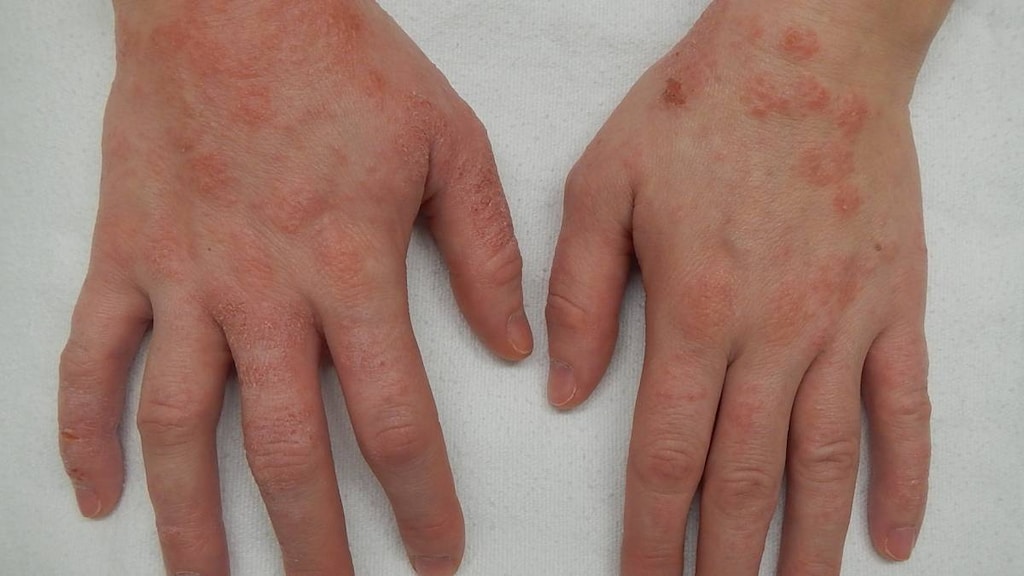
Although the blisters and bumps of dermatitis herpetiformis appear in clusters and resemble herpes lesions, they are not caused by the herpes virus.
Dermatitis herpetiformis (DH) may also be called Duhring-Brocq disease.
What causes dermatitis herpetiformis?
Dermatitis Herpetiformis is due to an intolerance to the gliadin fraction of gluten found in wheat, rye, and barley.
Gluten triggers the production of IgA antibodies and an autoimmune process that targets the skin and gut. More than 90% of patients with dermatitis herpetiformis also have gluten-sensitive enteropathy (celiac disease).
People at higher risk of dermatitis herpetiformis include:
- Those with celiac disease (around 10% have concurrent dermatitis herpetiformis)
- Males
- Caucasians aged 15 to 40 years
- Those with a family history of the condition
- Those with a personal or family history of other autoimmune diseases such as Addison's disease, alopecia areata, pernicious anemia, thyroid disease, type 1 diabetes, and vitiligo
What are the symptoms of dermatitis herpetiformis?
The following symptoms are typical of dermatitis herpetiformis:
- Clusters or groups of blisters or vesicles on the scalp, shoulders, buttocks, elbows or knees in a symmetrical distribution
- These are extremely itchy and crust over
- Underlying skin is normal or reddened
- Mild to severe gastrointestinal cramps are often present
- Some patients remain symptom-free
Initially, the rash may present as small red spots on the fingers. Sometimes the rash may resemble other inflammatory skin conditions such as dermatitis, scabies and papular urticaria.
Skin discoloration is common after the rash resolves.
People with dermatitis herpetiformis and celiac disease are more at risk of developing:
- Mouth ulcers and angular cheilitis
- Dry skin, nails and hair abnormalities
- Thin dental enamel
- Heart problems
- Recurrent miscarriages
- Fatty liver
- Neurological problems
- Non-Hodgkin lymphoma (NHL) of the intestines
How is dermatitis herpetiformis diagnosed?
See your doctor if you develop skin lesions resembling dermatitis herpetiformis. Your doctor will ask you about your history and any known medical conditions, such as celiac disease. Biopsies, nutritional deficiency tests, and other tests, such as a full blood count, liver function tests, antibody tests, serum calcium levels, and thyroid function tests may be done.
How is dermatitis herpetiformis treated?
Treatment includes a gluten-free diet for life. Dapsone may be given to resolve the itch from dermatitis herpetiformis. Other treatments may include topical or systemic steroids, sulfapyridine, and rituximab.
Most people respond well to a strict gluten-free diet and medication.
Article references
Image Attribution: James Heilman, MD [CC BY-SA 4.0], via Wikimedia Commons




